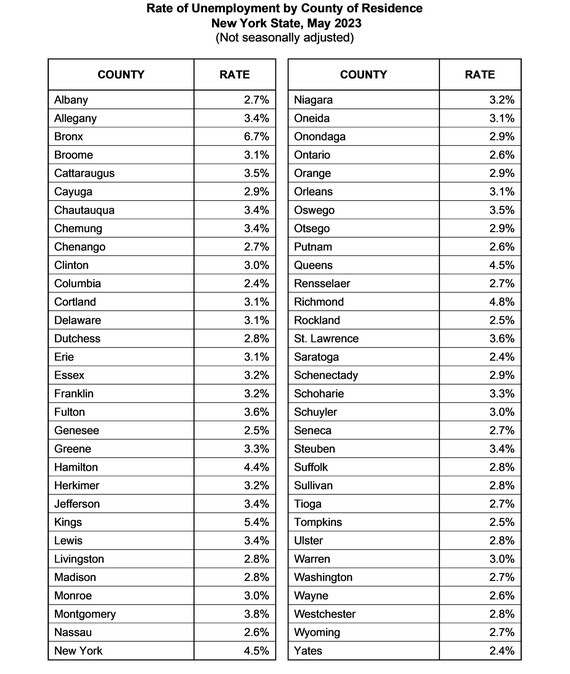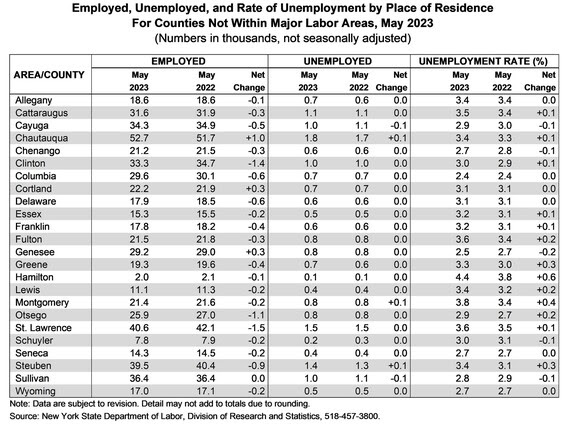ACS Reminds Families to Have “Summer Fun” And “Play it Safe;” Tips Are Focused on Keeping Children Safe in and Near Water, By Windows, On Bicycles, At Playgrounds, and in Cars
Today, on the first day of summer, the NYC Administration for Children’s Services (ACS) released tips to help parents and caregiver keep children safe through the summer months. The tips are focused on five important topics: water safety, window safety, bicycle safety, playground safety and the dangers of leaving children in hot cars. The tips will be posted on social media throughout the summer and the public webpage: ACS - Summer Safety (nyc.gov).
“Summer should be a time for safe fun for families and that’s why we are providing tips on how to ‘Play it Safe’ this summer,” said ACS Commissioner Jess Dannhauser. “By visiting our website, or by following ACS on social media, families have easy access to these important summer safety tips, which help all of us as parents and caregivers protect against all-too-common injuries to children. Families can keep their children safe by ensuring they are supervising at all times at the playground and near water – whether at the pool, the beach, or in a bath. Caregivers can also protect children by making ensuring that they wear safety equipment on bikes and scooters; that window guards are installed properly in their homes; and by never leaving a child unattended in a hot car. By following these important tips, New Yorkers can facilitate their children’s play and development while keeping them safe this summer!”
In 2021, ACS created the Office of Child Safety and Injury Prevention (OCSIP) to expand the agency’s existing efforts to reduce the risk of unintentional child injuries and fatalities. ACS has ongoing child safety campaigns, including those related to infant safe sleep practices and safe storage of prescription medications and cannabis edibles.
Below are ACS’s summer safety tips:
Water Safety
According to Safe Kids Worldwide, drowning is the leading cause of injury-related death among children between 1 and 4 years old and the third leading cause of unintentional injury-related death among children 19 and under. Children less than a year old are more likely to drown at home in the bathtub or a bucket. Use these tips for water safety whether your kids are in bathtubs, pools, or around buckets:
• Watch kids when they are in or around water, without being distracted. Young children can drown in as little as an inch of water, so it's important to keep them within an arm's reach of an adult.
• Empty tubs, buckets, containers and kids' pools immediately after use. Store them upside down and out of children's reach.
• Close lids and doors. Keep toilet lids and doors to bathrooms and laundry rooms closed when not in use.
• Install fences around home pools. A pool fence should surround all sides of the pool and be at least four feet tall with self-closing and self-latching gates.
• Stay close and be alert!
• Learn CPR and basic water rescue skills. It is important to know how to respond in an emergency without putting yourself at risk.
Bicycle Safety
Bicycling is one of the best ways for children and parents to get exercise and see the sights. However, bicyclists face many hazards and must follow safety precautions to prevent injury. Help set kids up for a great ride by making sure they have all the right equipment in place and follow these tips:
• Always wear a properly fitted helmet. Make sure the helmet is snug fitting, not tipped backward or forward and adjust the straps so they form a “V” shape under and slightly in front of the ears.
• Make sure the bicycle is adjusted to fit the child’s size. Ensure that the seat height is adjusted to allow for a slight bend at the knee when the leg is fully extended, handlebar height is at the same level as the seat; and the tires have enough air and the right amount of pressure.
• Watch for and avoid road, sidewalk and playground hazards.
•Avoid riding at night.
Playground Safety
Playing in playgrounds is great for your child's physical, social and thinking development. By staying close to your child, especially when they're trying something new or complicated, you can help keep playground visits safe and give your child the confidence to develop movement skills. Playground safety is about supervising children and checking whether equipment is safe for them.
Playground Safety Tips:
• Look for a playground with a fence around it. This will help to stop young children from running on to nearby streets. It also makes it much easier if you're looking after several children at once.
• Look for a safe ground surface in your playground. The equipment should be set in a thick layer of material like organic mulch or soft rubber flooring, which will cushion falls. Check that equipment is well maintained, look for safe ground surfaces, and make sure that metal equipment isn't too hot to play on.
• Check that the equipment is in good condition and the general environment has no obvious safety hazards, like sharp sticks.
• Buckle your child into swings if buckles are available. Your child will be less likely to fall out.
• Check the temperature of playground equipment like metal slides, poles, barriers and surfaces. Materials like metal, rubber and artificial turf can heat up in the sun and become hot enough to burn.
• Gradually introduce children to activities on monkey bars, climbing frames, swings and slides, so they can build skills and confidence.
Window Guards
As the weather gets warmer, many families may want to open their windows to let the fresh air in. But open windows can pose a serious risk to curious children. Each year, 3,500-5,000 U.S. children are hospitalized after falling from an open window. According to the Center for Disease Control (CDC), toddlers and preschool-aged kids have the highest likelihood of falling from a window and getting seriously hurt, many suffering serious and sometimes fatal head injuries. The best way to prevent accidental window falls are to watch your children around open windows and install window guards or window stops.
Other prevention tips:
• Window screens are meant to keep bugs out, not children in. A window screen is not considered a sufficient safety device because it is not designed to prevent a fall and will break easily under the weight of a child.
• Properly install window guards to prevent unintentional window falls.
• Keep windows locked and closed when they are not in use.
• Keep chairs, cribs and other furniture away from windows to avoid a potentially dangerous climb for small children.
Hot Cars
According to the National Highway Traffic Safety Commission (NHTSA), vehicular heatstroke is one of the leading causes of non-crash-related fatalities among children. Many of these incidents involve a parent or caregiver forgetting a child was in the vehicle or child playing unattended in a vehicle. Parents and caregivers can act immediately to prevent these deaths by never leaving a child unattended in a vehicle, not even for a minute! Even with the windows rolled down or the air conditioning on, a child's body temperature can rise three to five times faster than an adult. If you see a child unattended in a vehicle, call 911.
Park-Look-Lock Tips:
• Make sure all occupants leave the vehicle when unloading. Don't overlook sleeping babies!
• Always lock your car and keep car keys and fobs out of reach of children at all times. Teach children that cars are never to be used as a play area.
• Keep a stuffed animal in the car seat and when the child is put in the seat, place the animal in the front with the driver. Or place your purse, briefcase or cell phone in the back seat as a reminder that you have your child in the car.
• Make Look Before You Lock a routine whenever you get out of the car.
• Have a plan that your childcare provider will call you if your child does not show up for school.














